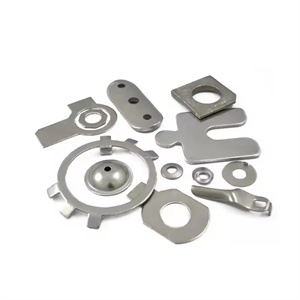High precision stamping is widely used in manufacturing various components of electrical equipment. These components need to have high-precision and high-quality characteristics to ensure the overall performance and stability of electrical equipment. High precision stamping technology can meet these requirements by manufacturing electrical equipment components with precise dimensions and complex shapes through precise mold design and stamping processes.
High precision stamping is also used to manufacture key components such as connectors and connectors for electrical equipment. These components play a role in connecting and transmitting current in electrical equipment, and have extremely high requirements for accuracy and reliability. High precision stamping technology can ensure the dimensional accuracy and shape consistency of these components, improve the connection performance and reliability of electrical equipment.
High precision stamping is also applied to manufacture components such as heat sinks and shielding covers in electrical equipment. These components need to have excellent heat dissipation and electromagnetic shielding performance to ensure the normal operation and stability of electrical equipment. High precision stamping technology can manufacture complex and high-precision heat dissipation fins and shielding covers, meeting the requirements of electrical equipment for heat dissipation and electromagnetic shielding.
With the continuous expansion of the electrical equipment market and technological progress, the application prospects of high-precision stamping in the field of electrical equipment will be even broader. High precision stamping technology will continue to improve, providing more high-quality and high-precision components for the electrical equipment industry, and promoting the sustainable development of the entire industry.
High precision stamping has the following significant characteristics:
Ultra high precision: capable of achieving extremely small dimensional tolerances, typically reaching the micrometer or even submicron level. For example, when manufacturing stamping parts for micro electronic components, the dimensional deviation can be strictly controlled within a very small range to ensure the performance and reliability of the components.
Excellent repeatability: The parts produced by each stamping have highly consistent dimensions and shapes, ensuring the stability and consistency of the product. Taking automotive components as an example, high-precision stamped parts from the same batch can be perfectly interchangeable, meeting the high-precision requirements of automotive assembly.
Complex shape forming ability: capable of manufacturing parts with complex geometric shapes while maintaining high precision. For example, some components with special surfaces and complex structures in the aviation field can be achieved through high-precision stamping.
Excellent surface quality: The surface of the stamped parts is smooth, even, and almost flawless. This is crucial for some products that require extremely high appearance requirements, such as the case of high-end watches.
